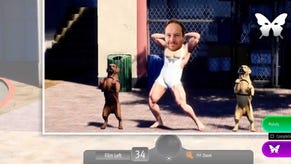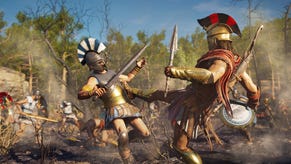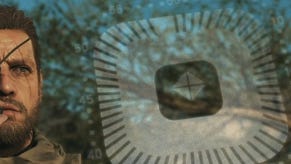Face-Off: Far Cry 3
Jungle strike.
| - | Xbox 360 | PlayStation 3 |
|---|---|---|
| Disc Size | 5.8GB | 6.47GB |
| Install | 5.8GB (optional) | 6298MB (mandatory) |
| Surround Support | Dolby Digital | Dolby Digital, DTS, 5.1LPCM |
On a technical level, Far Cry 3 gave us some cause for concern at an early preview event in October, where we saw some nasty glitches, an abundance of full-screen tearing and even outright freezes on the 360 code we had to play with. This was all in the face of what appeared to be a broad and beautiful open-world FPS - a rare beast in the ongoing climate of the grim and grey - with an intriguing focus on territoriality and survival during a pirate take-over. The promise was there, but somewhat eclipsed by a clearly unoptimised build.
It's typical to see these kinds of gremlins pop up with early code and so we held hope that developer Ubisoft Montreal had the gumption to deliver a squeaky-clean final build this week. The underlying engine, now relabelled Dunia 2, already has a proven track record for delivering a solid experience on multiple platforms. However, with extra features such as dynamic weather, global illumination, and improved water shaders being leveraged into this updated version, can the PS3 and 360 versions still make a respectable showing compared to the reference PC release?
Let's have a look at image quality first. To get an idea of how texture and effects quality compare between the PC, 360 and PS3 renditions, we've put together a 50-strong Far Cry 3 comparison gallery based on like-for-like frames. Due to the motion blur in effect on PC, the static nature of these assets doesn't always bring out the best results for that platform - so we've also produced every combination of comparison video between the three versions below.
The first issue to knock on the head is that of resolution and aliasing. There's a strange phenomenon in resolution preferences as of late, and we're seeing more developers opt for slight crops to the overall output image. Just like Criterion's Need for Speed: Most Wanted, the 360 version runs at 1280x704, with eight-pixel borders at the top and bottom of the screen accounting for the reduction. It's unclear how this benefits performance precisely (we suspect it's easier on memory management), but the avoidance of any upscaling means we're left with a very clear image indeed.
"Xbox 360 and PS3 each have their plus and minus points but it's PC that offers the route to a compromise-free gameplay experience."
Alternative comparisons:
- Far Cry 3 - Xbox 360 vs. PlayStation 3
- Far Cry 3 - PlayStation 3 vs. PC
Bizarrely, the PS3 takes the same tack in terms of odd resolution, albeit with a slightly more aggressive crop to the native 720p output. Subtle borders are added to the sides of the image here, in addition to those on the vertical axis, giving us an overall resolution of 1274x702. This is a barely noticeable concession when played on most HDTVs, and will typically blend into the overscan or black bezels on most sets. To back this resolution up, we also have what appears to be a multi-sample based approach to anti-aliasing on both consoles [Update: we're now more inclined to go towards FXAA being deployed on consoles, exhibiting different forms of the faux-MSAA shading effect we see in some games like Driver: San Francisco]. This will come as a relief to players of Far Cry 2 on PS3, which utilised the GPU's native quincunx post-processing method to quash the jaggies. This time, we're left with a far clearer image as a result of the changes.
The PC version, meanwhile, comes replete with options for tackling aliasing. Alpha to coverage and MSAA options are available to DirectX 11 users; these work well in tandem, with the former dealing with transparencies such as grass blades, while the latter handles aliasing on geometric elements. Failing that, a post effects setting is available in the standard DirectX 9 graphics menu, scaling from low to ultra quality, which deals with all of these elements in one final pass. Even on the lowest setting the results are effective, though a residual blur comes as part of the deal.
Global illumination is the big bullet-point for Dunia 2, and lighting effects appear very similar across all three versions; lens flare, bloom, and light shafts are all on board for PS3 and 360 versions. The only discrepancy is in rendering distance for bloom-emitting objects, where the PC's highest ambient lighting setting allows light bulbs dangling around Amanaki Village to stay lit from farther away. Otherwise, the day-night cycles take full advantage of the new lighting engine while outdoors, with shadows slowly creeping across the environment as the sun sets.
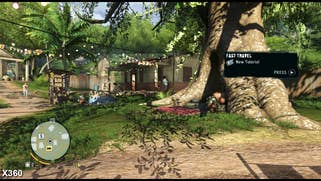


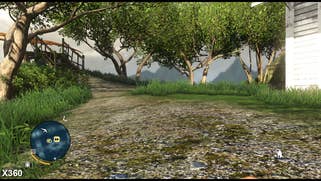
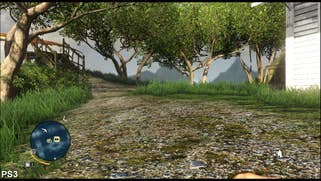




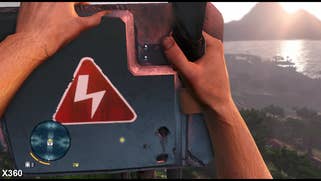
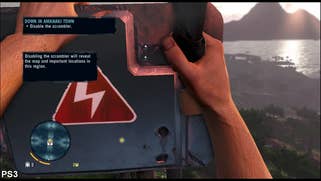

Screen-space ambient occlusion (SSAO) makes the cut on consoles this time around, adding light shading beneath foliage and around characters. It gives every object a sense of place within an environment, though the dark hue that circles characters can appear a little unnatural in its excesses. This is made more subtle for DirectX 11 users on PC, who will have access to the more accurate horizontal-based ambient occlusion. Strangely, there's no way to turn ambient occlusion off outright with this API selected, and SSAO remains the low, GPU-intensive default.
Meanwhile, the jungle environments are suitably dense with detail, so it's surprising that LOD pop-in isn't a bugbear on the more restrictive console formats. This is likely to do with a smart handling of a player's effective field of view, where elements outside of it are stripped of detail in a gradual manner. This triangle culling is mostly apparent on trees and buildings when shifting quickly from place to place. Reclaiming a communications tower, for example, allows us to see leaves popping in before their stems while the camera whips around the surrounding area - a more noticeable trait on 360 during these fast sweeps, but often gone in an instant.
Once loaded, environmental detail is superb and far-reaching, but surprisingly static compared to a game like Crysis. Tree branches sway to a set rhythm to mimic wind, but player interaction itself is limited to a quick flapping backwards and forwards of branches as you pass. Scrambling through thickets with your arms flailing in front is a regular sight in Far Cry 3 so it's surprising the environment doesn't react more dynamically to your movements, or potentially break down when bulldozing through with a vehicle. Given the level of detail elsewhere, this feels like a bizarre omission.
"Couple a powerful CPU with a capable graphics card and Far Cry 3 is a magnificent exercise in PC tech dominance."



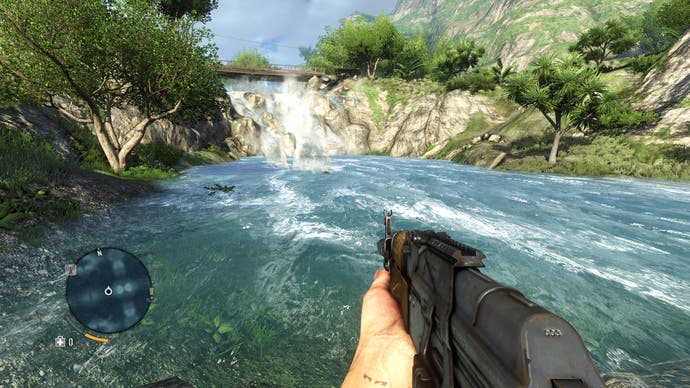
Looking at the PC version in particular though, we see it side-stepping many of the issues present on consoles such as the flickering shadows by utilising an ultra setting which maintains their solid shape in motion. Elsewhere, the overall look of water shaders in particular is very close to the other formats, though on close inspection we see the PC benefitting from global reflection of nearby objects (not just the sky box), plus higher resolution caustics, bubbles and splash effects. It's quite a sight, and this bump in quality becomes especially noticeable around waterfalls and beaches.
Far Cry 3: Performance Analysis
While the footing isn't entirely level on the image quality front, both the PS3 and 360 do offer up their own unique advantages in the shadow of the PC version. Performance could well prove to be the distinguishing point here. To kick things off, we take a look at synchronised stretches of play in Far Cry 3 using our Face-Off footage in a bid to exactly pinpoint where the peaks and troughs might be.
We see Far Cry 3 attempting to hit the 30FPS target as per the previous game, alongside an adaptive v-sync where frames may run over budget - in short, it's the standard "lock at 30, tear beneath" set-up common to many console titles.
Our footage starts off at an unprecedented low during the cut-scene with Vaas, for which we record a remarkably sluggish 15FPS on PS3 - a surprise considering how little is being rendered at the time. This is compared to 20FPS on 360 in matching footage, which later proves to be the running standard for every subsequent cut-scene on either platform. It's not exactly ideal, but difficult to notice where the camera stays still, and fortunately doesn't cross over to actual gameplay. In these situations, it appears that Ubisoft implements a full v-sync for these scripted moments, moving onto the adaptive strategy during gameplay.
"Xbox 360 wins out over PS3 in terms of raw frame-rates but the gap isn't massive and both versions suffer from intense screen-tear and noticeable judder."
Even so, travelling around the islands by either foot or car still gives us wavering readings on both consoles, mostly circulating around the 25FPS point. This is usually a little higher on 360, though the juddering sensation feels largely comparable between the two at these levels of refresh. However, the regular, high levels of tearing prove to be the greater issue here.
Rather than being subtly marginalised to the top of each console's output, each frame is constantly under threat of being torn directly through the middle when the hardware is stressed. This becomes a major blemish on both PS3 and 360 alike when charging through jungles, or indoor areas with high ornamental detail, which sadly comprises most of the game. The issue is only amplified by having the game set in a colourful world where such artefacts are easier for the eye to pick out.
On to battle; our next selection of clips centres on shoot-outs and a spell of animal hunting. These unsynchronised scenes typically stress performance even further, though for the most part Far Cry 3 operates at the same circa 25FPS as before, and with the same onslaught of full screen tearing. On-rails set pieces bring both consoles down to the greatest extent in our footage, and a shoot-out from the back of a rolling car causes both the 360 and PS3 to drop to little over 20FPS. Again, it's Microsoft's console that tends to remain a few frames above the competition.
"Far Cry 3 aims for 30FPS on console but in-game it rarely attains it. In the most intense scenes frame-rate descends south of 20FPS, with a small 360 lead."
PC performance bears a mention, as Ubisoft Montreal has set out to produce one of the more graphically taxing games of recent years with this release. Results on our high-end system, featuring an Intel i5-2500k overclocked to 4.2GHz, and a GTX 670 graphics card, look to be very favourable during the first three hours of play. Using the latest NVIDIA patch 310.94, which sets out to improve performance by up to 38%, we can run at 1080p on DirectX 11 with all settings maxed out, giving us a response at around the 50FPS mark. To ramp this back up to the intended 60FPS, we can lower shadow quality from ultra to high, and also MSAA from 4x down to 2x for a quick fix with unnoticeable repercussions.
Of course, those with budget-orientated gaming PCs have the option to turn off DirectX 11 features entirely (Updated: scrapping HBAO, or HDAO for AMD users, in the process), and even cap the game at 30FPS if need be. Performance remains well-rounded even without the multi-core rendering option - removed entirely from the DirectX 11 menu with the day one patch. This caused major stability issues for us when selected, but even without the option to defer tasks to more processor threads, the code feels well optimised.
Far Cry 3: the Digital Foundry verdict
Compared to the first stretch of Dunia's legs on console the engine improvements are small but impactful. We don't see anything as game-changing as the wildfire dynamic being added to the equation, but refinements to motion capture and facial animation technology do much to amplify the beats in Far Cry 3's story. At the centre of the show is Michael Mando's delightfully off-kilter performance as Vaas, and the new tools are applied to equally great effect with the player's first-person hand animations. Jungle exploration has always been the running theme of the series, but propping up a narrative backbone in this way only adds to your sense of purpose around the islands.
But which version offers the best experience? Alas, abundant full-screen tearing does much to curtail the look of an otherwise gorgeously designed game on console platforms, for which both PS3 and 360 are guilty to equal degrees. Frame-rate is also a big drag too, and we'd hoped for better than the 20-30FPS fluctuations we're getting from both platforms during gunplay - though 360 fares slightly better here overall. There are stability issues with the PC release too but given the right hardware specs this is undeniably the road to take for a tear-free experience.
Image quality bears mention too: both console releases are tightly paired in their approach to multi-sampling native 720p outputs, and the only eye-catching difference is the dithered shadows on Sony's platform around globally illuminated areas. As if to compensate here, we see superior texture filtering on PS3 and slightly less evidence of triangle culling after fast-travelling around the archipelago. It's a close call in many respects, but the shadow issue sticks out even without the other formats to compare it to, leading us to give the 360 a nod here as well.
In all, Ubisoft Montreal has conjured up a beautiful, boar-skinning, hang-gliding romp on all three platforms, though tolerance is advised for console owners whose pet peeves include screen tearing. Otherwise, the scale of cut-backs to these versions isn't as extreme as we'd expected going in. Many principle effects and assets are faithfully upheld from the PC version - even down to the taxing ambient occlusion, and global lighting. Image quality purists will know where to find all the bells and whistles, but in the final tally, Far Cry 3 stands as a strong multi-platform release.


